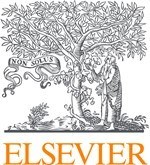Beijing University of Chinese Medicine Collaborates with Elsevier to Launch First Branch of Traditional Chinese Medicine Taxonomy

NEW YORK, March 4, 2020 /PRNewswire/ — Elsevier, a global leader in information analytics, specializing in science and health, launched the first branch of its Traditional Chinese Medicine (TCM) taxonomy in collaboration with Beijing University of Chinese Medicine (BUCM), a leader in the field of TCM research and medical treatment. Acupuncture, a therapeutic model and key component of TCM, is the first branch of the taxonomy and is available now, hosted on Embase, the world’s most comprehensive biomedical literature database. On completion, the TCM taxonomy will give scientists access to a database of integrated health and medical research to help develop their understanding of TCM as a holistic approach.

Representing the modernization of TCM, the taxonomy aligns with the goals set by the Chinese government in its Healthy China 2030 plan, which recognizes the potential for TCM to play a valuable role in the prevention and management of chronic diseases1, in conjunction with primary health care. It is estimated the total TCM market within China will rise to $107 billion by 2025; TCM has also spread beyond traditional Chinese communities, with the global TCM market valued at $121 billion USD2. According to Chinese government estimates, more than one-third of the global population has received acupuncture treatment3. The popularity of traditional Chinese remedies and practices point to an inevitable increase in worldwide R&D efforts involving TCM, which will require easily accessible clinical data.
“We are extremely pleased to be able to share our expertise and knowledge of TCM with the wider, global community through Embase. Our aim is to make existing research accessible so that scientists can obtain knowledge from traditional clinical practices,” said Professor Jianping Liu, Director, Centre for Evidence-Based Chinese Medicine at Beijing University of Chinese Medicine. “We hope that, as we continue to build the taxonomy and add new branches, it will allow researchers from around the world to harness the potential of TCM in a safe and effective way, to contribute to improved population health.”
By including the English and Chinese names (Pinyin) for concepts alongside traditional terms, users will have comprehensive information on a single platform. As the taxonomy continues to grow, it will empower researchers with knowledge about the ingredients of specific TCM formulas and help address issues around safety by preventing potentially harmful interactions between TCM and Western medications. Further, it will allow the development of innovative pharmaceuticals using knowledge from ancient therapies and herbal medicines.
“The market for TCM is growing rapidly, the World Health Organization estimates that more than 100 million Europeans are currently using traditional and complimentary medicines, with many more users across Africa, Asia and North America,” said Cameron Ross, Managing Director of Life Science Solutions, Elsevier. “The taxonomy we are building will give our clients access to much-needed, specific TCM integrated health and medical research.
“Research into TCM has historically been difficult due to problems with consistency. Multiple terms are used for the same compounds and there are numerous spellings, synonyms and symbols making it difficult for researchers to search for and retrieve information.”
The acupuncture branch of the taxonomy is currently available to all with a subscription to Embase. Elsevier and BUCM are currently working on the second branch of the taxonomy – herbal medicinal formulae – with further releases planned for Q4 2020.
Notes for editors
1 Sourced from: “Healthy China 2030 (from vision to action)“. Geneva, Switzerland. © World Health Organization, 2016.
2 Sourced from: “Unlocking the Potential of Chinese Medicine” Pharma Technology Focus (Special Issue). London, UK. © Net Resources International, 2018
3 Sourced from: “How acupuncture proves its point“. China Daily European Weekly, London, UK. © China Daily Information Co, 2018
About Elsevier
Elsevier is a global information analytics business that helps scientists and clinicians to find new answers, reshape human knowledge, and tackle the most urgent human crises. For 140 years, we have partnered with the research world to curate and verify scientific knowledge. Today, we’re committed to bringing that rigor to a new generation of platforms. Elsevier provides digital solutions and tools in the areas of strategic research management, R&D performance, clinical decision support, and professional education; including ScienceDirect, Scopus, SciVal, ClinicalKey and Sherpath. Elsevier publishes over 2,500 digitized journals, including The Lancet and Cell, 39,000 e-book titles and many iconic reference works, including Gray’s Anatomy. Elsevier is part of RELX, a global provider of information-based analytics and decision tools for professional and business customers. www.elsevier.com
Media contact
Christopher Capot, Global Communications
Elsevier
+1-917-704-5174
c.capot@elsevier.com
View original content:http://www.prnewswire.com/news-releases/beijing-university-of-chinese-medicine-collaborates-with-elsevier-to-launch-first-branch-of-traditional-chinese-medicine-taxonomy-301016492.html
SOURCE Elsevier
